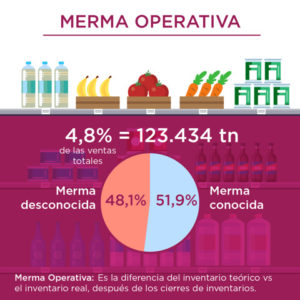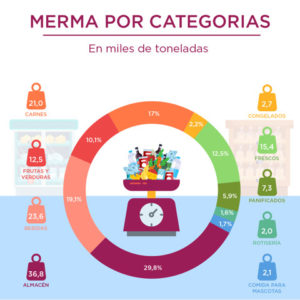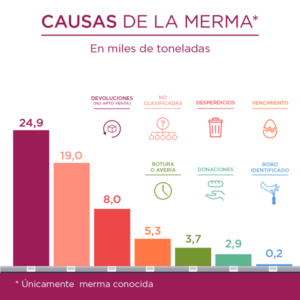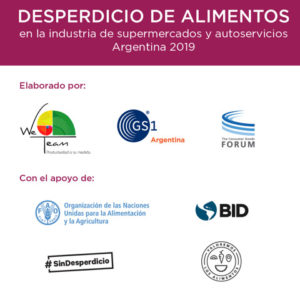Food is a wonderful part of the many vibrant cultures across Latin America, acting as a rich thread in the fabric of society. We love to cook, eat and bring our communities together with delicious meals and share the history and tradition that many of these recipes hold.
Still, unfortunately, we are not strangers to food insecurity. Across the continent, 47 million people struggle with hunger and lack reliable access to food. It’s well known that 14 percent of food produced globally each year is lost from post-harvest up to, but excluding, the retail stage, and the FAO estimates that 12 percent is lost in Latin America, amounting to about 20 percent of economic impact.
When I learned that if we were able to save the food lost at just the retail level in Latin America, we would contribute to increase the availability of healthy food to 30 million people—about two-thirds of those in Latin America who suffer from hunger—I knew that The Consumer Goods Forum (CGF) and our regional members were in a powerful position to drive positive change on this issue.
However, we knew that we first had to do our own research to understand the specifics of the food waste problem and identify its drivers so we could best help our members address it. Like the CGF’s Managing Director Wai-Chan Chan wrote for the first annual International Awareness of Food Loss and Waste Day, “Without the numbers and the knowledge to understand just how much food is being lost between producers, retailers and consumers—and importantly, why—our efforts to tackle the problem will be fruitless.”
That is one reason why the CGF’s Coalition of Action on Food Waste has made data measurement and public reporting its first priority, and why we in Latin America launched a baseline project to gain a stronger understanding of the specifics of the problem in our region. We particularly saw Argentina as a significant place to start this research because the Ministerio de Agricultura Ganadería y Pesca de la Nación learned in 2015 that 16 million tonnes of food produced in Argentina—12.5 percent—goes uneaten each year. That is the highest amount of food lost among Latin American countries and by some estimates, worldwide.
This past month, we were very pleased to publish the results of this study in our latest report, Desperdicio de Alimentos en Supermercados y Autoservicios de Argentina: Causas y Estimaciones (Food Waste in Supermarkets and Self-serve Markets in Argentina: Causes and Estimations). For this study, we collected data from CGF members from January to December 2019. Among retailers, the CGF members who joined us in the programme were Cencosud, Cooperativa Obrera, La Anonima, and Walmart—representing 41 percent of the market in Argentina. Danone, Grupo Bimbo, PepsiCo, Serenisma, Molinos, Mondelēz , Nestlé, and Unilever joined us from the CGF manufacturing college.
From the study, we were able to understand just how much food was lost during 2019 and importantly, identify some of the reasons behind that loss.
We learned that 64,080 tonnes of food were wasted in the retail sector, which amounted to a huge economic loss for CGF members: approximately 216 billion Argentine pesos (USD 2.8 billion or EUR 2.4 billion).
A variety of reasons contributed to this food going unsold, but mostly we saw that approximately 20 percent of all wasted food was sent back to manufacturers. Other causes included food expiration and waste. Unfortunately, we also saw most of the food going to waste was indeed healthy food that contributes to a well-balanced diet, including fresh fruits and vegetables, dairy products and meat.
Though the project did reveal to us just how big the challenge of addressing food is, it also gives me an optimistic outlook for the future. This first baseline in Argentina is a very important step to create sustainable food strategies by identifying areas where we can take action to prevent losses; actions that will surely generate a positive impact on the value chain. Without knowing more details about where food loss happens and why, we at the CGF and our members would not be able to start taking positive steps towards remedying these losses.
Additionally, the project helped emphasize our strong belief at the CGF that we can’t solve these problems on our own. The project would not have been possible without the support of the Inter American Development Bank (IADB, Banco Interamericano de Desarrollo); the UN Food and Agriculture Organization (FAO, Organización de las Naciones Unidas para la Alimentación y la Agricultura); the Argentine Ministry of Agriculture (Ministerio de Agricultura Ganadería y Pesca; GS1 Argentina; We-Team; and the participating CGF members.
While this collaboration did shine a light on just exactly how much work we have ahead of us to tackle the problem of food waste in Argentina, I feel confident that, now equipped with this knowledge, we will be able to drive actionable change faster, more efficiently and start building a sustainable food system that is good for businesses, people and the planet.
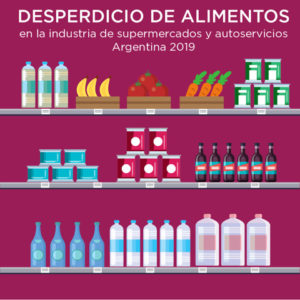
This blog was written and contributed by:
Erika Rodriguez
General Manager, Latin America
The Consumer Goods Forum
For more information about the CGF’s work in Latin America, visit our regional website here.
